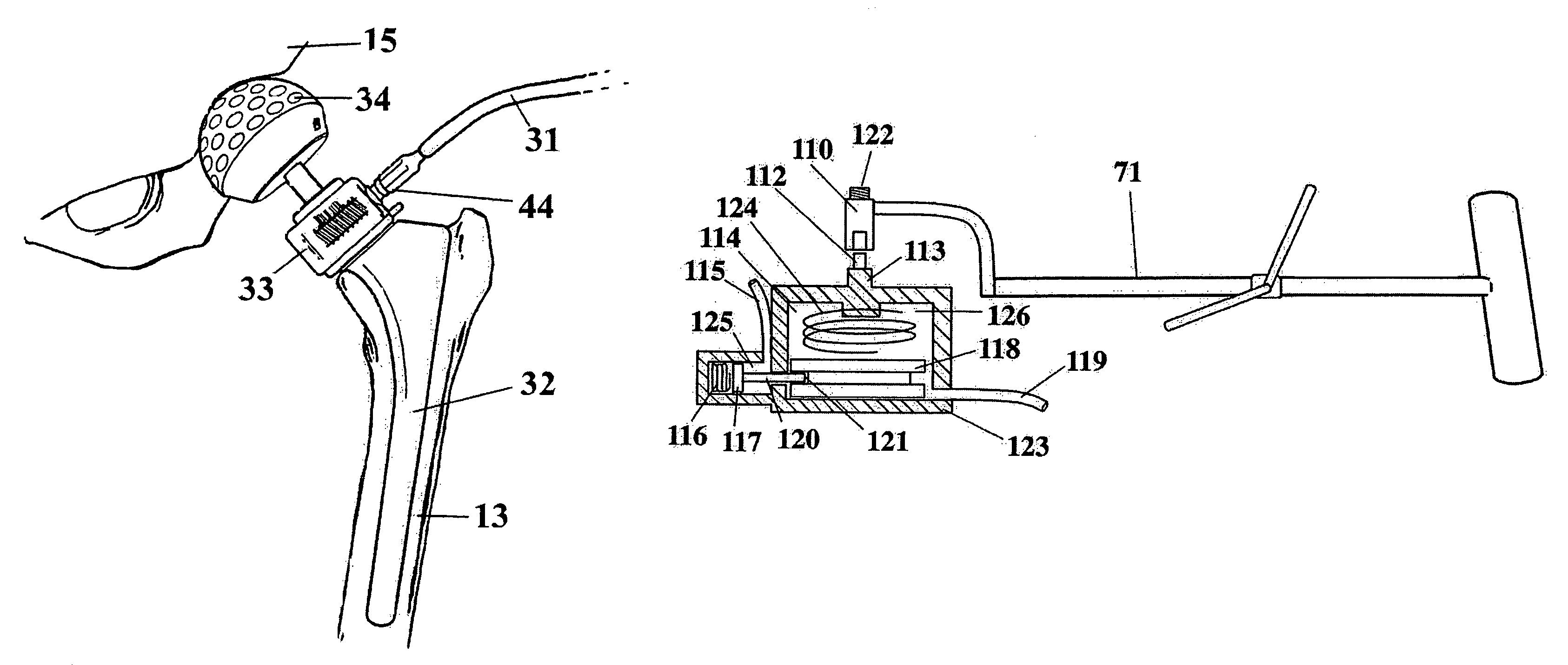Apparatus and method for minimally invasive total joint replacement
a total joint replacement and minimally invasive technology, applied in the field of apparatus and minimally invasive total joint replacement, can solve the problems of increasing pain, progressive pain, swelling, and stiffness of joints, and affecting the healing effect of the joint, so as to achieve the effect of limited surgical exposure and minimally invasive surgical procedures
- Summary
- Abstract
- Description
- Claims
- Application Information
AI Technical Summary
Benefits of technology
Problems solved by technology
Method used
Image
Examples
Embodiment Construction
[0036]FIG. 1 illustrates the general anatomy of the hip joint and a typical surgical approach 10 to the hip joint to expose the proximal femur 11 and the acetabulum 12. In traditional total hip replacement there are generally four surgical approaches to the hip joint. These include posterior approaches without trochanteric osteotomy, trans-trochanteric approaches, anterior approaches without trochanteric osteotomy, and Smith-Peterson approaches. Such approaches are described in detail in various orthopedic reference text such as “Operative Orthopedics,” edited by M. W. Chapman, MD, J.B. Lippincott Company, 1988. In addition, a direct lateral approach is commonly used for total hip arthroplasty. The most common surgical approach to the hip is posterior, and the musculature disrupted may include the short internal and external rotators, tensor fascia femoris, quadratus femoris, piriformis, and on occasion part of the gluteus medius and minimus, and the gluteus maximus.
[0037]In minimal...
PUM
| Property | Measurement | Unit |
|---|---|---|
| Force | aaaaa | aaaaa |
| Mass | aaaaa | aaaaa |
Abstract
Description
Claims
Application Information
 Login to View More
Login to View More - R&D
- Intellectual Property
- Life Sciences
- Materials
- Tech Scout
- Unparalleled Data Quality
- Higher Quality Content
- 60% Fewer Hallucinations
Browse by: Latest US Patents, China's latest patents, Technical Efficacy Thesaurus, Application Domain, Technology Topic, Popular Technical Reports.
© 2025 PatSnap. All rights reserved.Legal|Privacy policy|Modern Slavery Act Transparency Statement|Sitemap|About US| Contact US: help@patsnap.com



